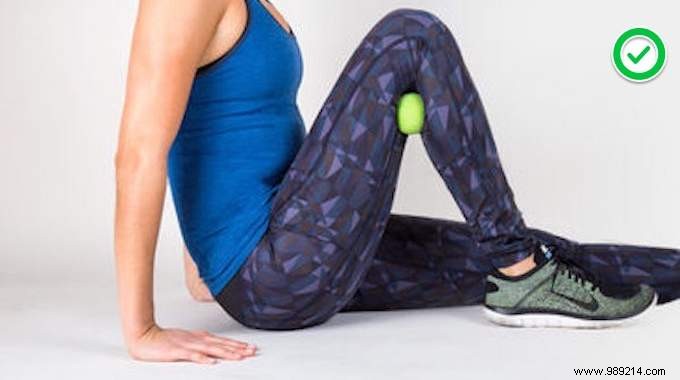
Do you have knee pain? Know that you are not alone in this case!
One in four French people now suffers from joint pain linked to arthritis.
Fortunately, there are simple and effective movements to relieve and heal your knee pain.
Here are the 6 Best Knee Pain Exercises You Can Do Anywhere .
Try doing these stretches after a workout to keep your knees healthy for life. Watch:
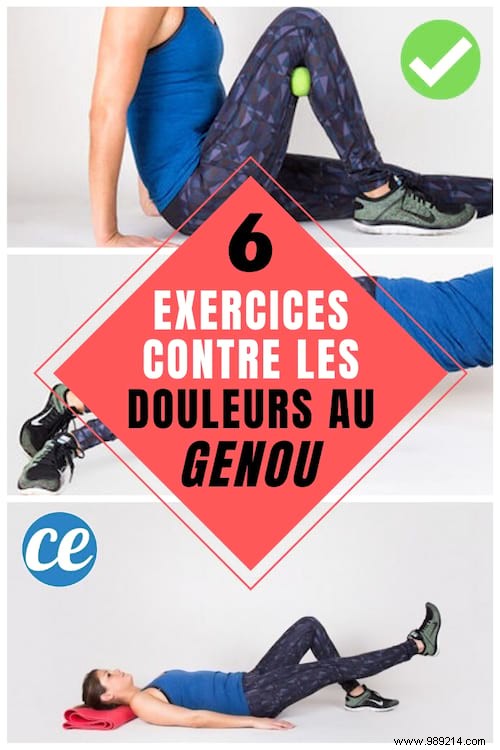
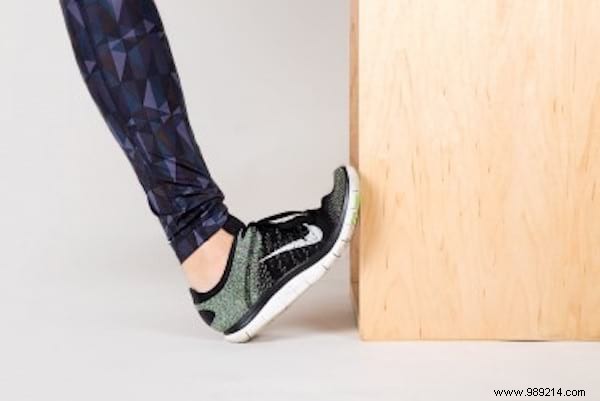
Calf muscles are often overlooked during stretching. And that's a shame ! Because stretching the calf is essential. The calves must be stretched to prevent pain from rising towards the knee.
- Find a wall you can lean on.
- Facing the wall, flex your right foot and position your heel where the floor meets the wall.
- Your toes should be held in the air while your heel rests on the ground.
- Keeping your heel on the floor and your leg as straight as possible, bend your leg forward keeping the stretch to the maximum.
- Bend over for 5 seconds then release, working on the intensity of the stretch.
- Repeat with your left leg. Aim for 10-15 reps on each leg - or more, if you're still feeling tight.
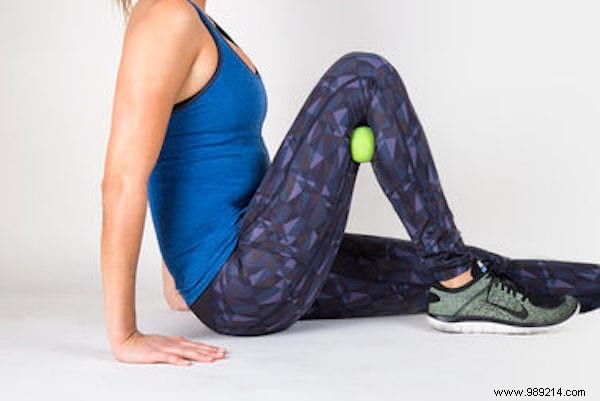
This movement allows you to adjust the tension in your calf and hamstrings.
- Sit on the floor and bring your foot closer to your buttocks so that your knee is bent.
- Wedge a tennis (or yoga/massage) ball behind your right knee, sandwiching it between your calf and hamstrings.
- Create a "squeeze force" by pulling your shin towards you, then make circular motions with your foot one way and then the other to help create space in your knee joint.
- Continue until the tension in that area is relieved, then switch legs.
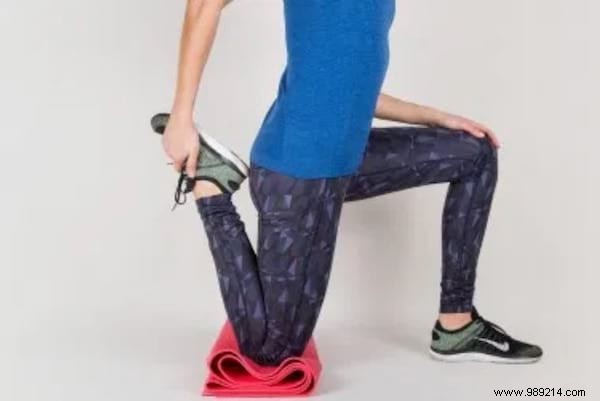
This stretch is not only amazing, but also does double duty for your hip muscles and quads.
- Lay a folded towel or mat between your knee and the floor.
- Get on one knee and bend the other leg with the foot flat on the ground in front of you.
- Create a 90 degree angle with both of your legs.
- Lean forward by stretching the front of your hip down. The back remains straight.
- Next, grab the ankle of your back leg and pull it towards your butt for a deep stretch from your hamstring and hip, down the front of your leg to the knee.
- Do this stretch about 10 to 15 times or more, depending on the level of stiffness you feel.
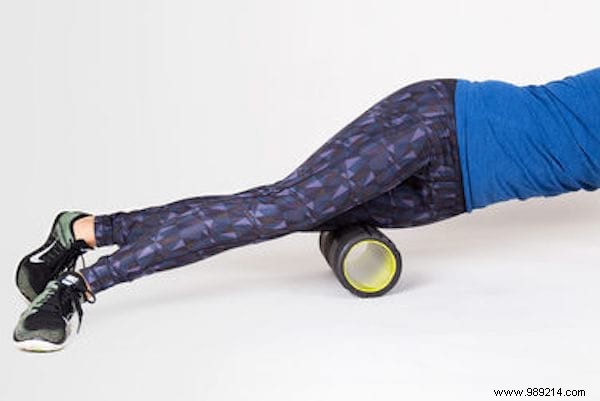
It is essential to stretch your quadriceps, because they must constantly adapt to your sitting position. They are often under constant tension. In order for this large muscle group to regain its optimal functioning, it is best to use a foam roller.
- Lie face down.
- Place a foam roller under your right leg, just below your quadriceps.
- Carry the majority of your body weight on your leg and roll gently.
- Instead of only rolling up and down, also roll side to side, concentrating pressure on the stiffest points of your muscles.
- Switch legs.
- Keep rolling until you feel no more pain.
- If possible, do it for at least 5 minutes.
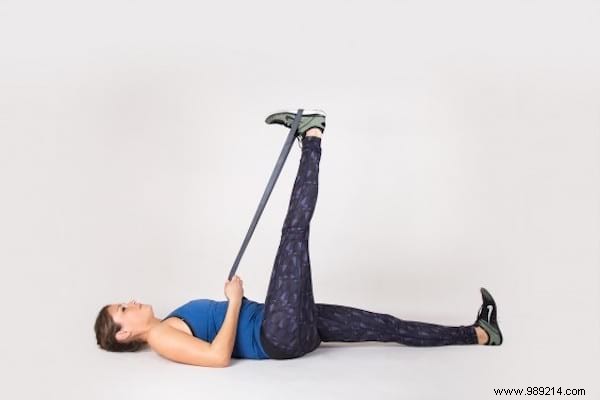
Your hamstrings affect your knee more than you might think and are often the cause of discomfort or pain.
- Lie face up, left leg flat on the floor, foot bent.
- Take your right leg and keep it straight by leaning on the wall or on the table or use a rubber band.
- This stretch should radiate down the back of your leg, starting at the knee.
- Once you find the deepest stretching point, alternate in sequences of 5 seconds of contraction and relaxation of the right foot.
- If you are flexible, hold your right ankle and pull it towards you.
- Aim for 10-15 sets of 5 seconds and continue if you still feel stiff.
- Repeat with your left leg.
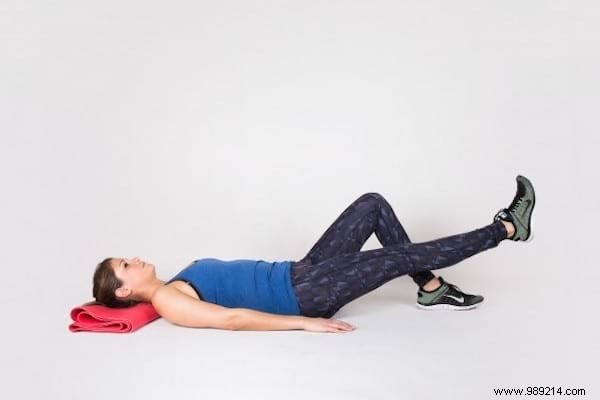
This leg lift exercise doesn't put much strain on your knee but also activates and strengthens your quadriceps.
- Lie face down with your left leg bent and the other leg stretched out on the floor in front of you.
- Raise your right leg about 30cm, rotating it outward (so your toes point diagonally rather than straight up at the ceiling).
- Put it back on the ground and raise it again.
- Do 3 sets of 10 to 15 repetitions, changing legs.
- As you get stronger, add ankle weights up to 4.5 kg.
Be aware that the knees, legs, neck and back, are at the top of the list of common pain problems.
Regarding knee pain, it can be caused by many different things.
It could be simply the wear of the cartilage in the joints or a twisting of the knee during an exercise.
But also inactivity, excess weight, poor posture, poorly treated injuries, as well as malnutrition.